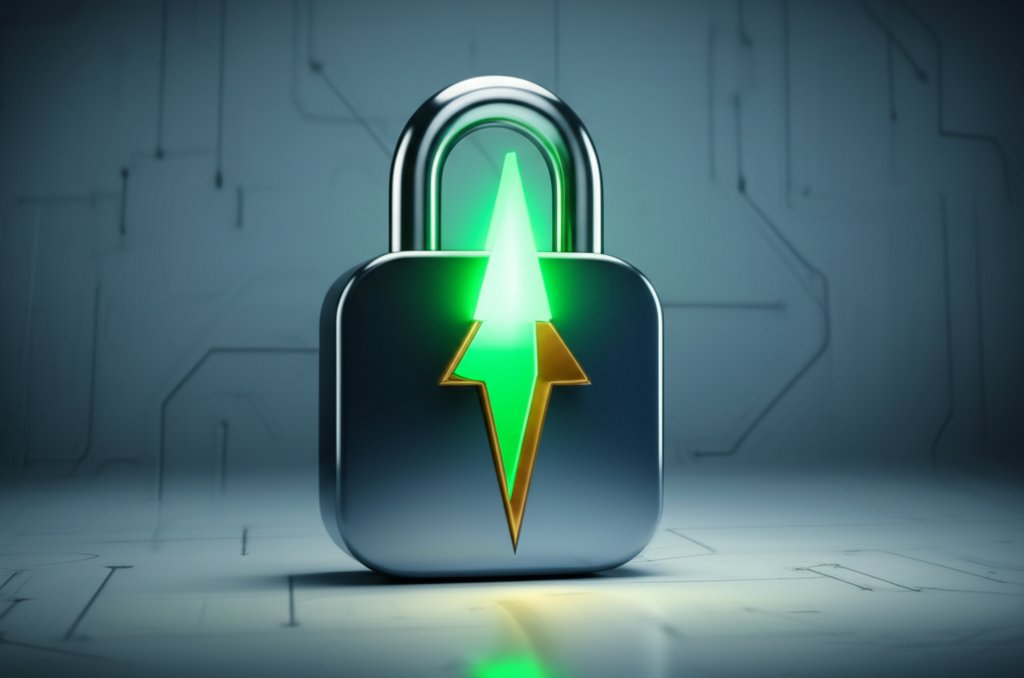If you logged into Deadlock today and felt like you were playing an entirely different game, you’re not wrong. Valve has just pushed one of the most transformative updates in the game’s history, and these sweeping deadlock changes are designed to do more than just shuffle the hero rankings—they’re a fundamental reset of the game’s pace, strategy, and competitive ecosystem.
The goal is clear: break the stale metas, prevent the kind of drawn-out, unkillable team fights that cause gameplay to freeze, and inject a new level of strategic depth. This isn’t just a patch; it’s a new beginning. We’ve dissected every line of the update to bring you the definitive guide on what’s changed, why it matters, and how you can get ahead of the curve.
The Big Picture: What’s New in Deadlock at a Glance
No time for the full deep dive? Here are the most critical takeaways from this massive overhaul:
- The Map is Now 3 Lanes: The classic four-lane map is gone, replaced by a completely redesigned three-lane battlefield with new paths, objectives, and sightlines.
- Matchmaking is Unified & Smarter: Normal and Ranked queues are now a single, streamlined mode. The new system uses Hero-specific MMR to create more balanced matches based on your actual experience with each character.
- The Pace is Faster: A significant boost to base sprint speed and changes to how damage affects it means movement and rotations are quicker and more fluid than ever.
- Healing Has Been Slashed: A game-wide nerf to healing, lifesteal, and regeneration from heroes and items aims to make fights more decisive and less of a stalemate.
- Core Mechanics Are Reworked: Farming Soul Orbs no longer requires last-hitting, power-ups are claimed differently, and lane-swapping is now a pre-game option.
The Battlefield Reimagined: Navigating the New 3-Lane Map
The most immediate and jarring change is the ground beneath your feet. Valve has retired the old four-lane map, a staple of the genre, in favor of a more dynamic three-lane design.
This isn’t just about removing a lane; it’s a complete philosophical shift. The new layout concentrates action, forces more frequent team interactions, and makes map control both simpler to understand and harder to maintain. Buildings have been moved, jungle paths have been redrawn, and neutral camps are in entirely new locations. Sightlines that you relied on are gone, replaced by new ambush points and flanking routes.
For veterans, this means unlearning years of muscle memory. For new players, it presents a more intuitive and less overwhelming battlefield.
Your First Move: Use the ‘Explore Map’ Feature
To soften the blow, Valve has added a crucial new tool: Explore Map. This feature lets you load into the new map completely alone, without bots or timers. Use this to:
- Test Your Routes: Practice jungle clears and gank paths without pressure.
- Find New Ward Spots: Identify key chokepoints and high-ground areas for vision control.
- Master Movement: Get a feel for the new sprint speed and how long it takes to rotate between lanes and objectives.
Spending 20 minutes in this mode before jumping into a match will give you a colossal advantage over players trying to learn on the fly.
Your Climb Just Changed Forever: A Deep Dive into Matchmaking and MMR
Forget everything you knew about the ranked grind. The separation between casual and competitive play is gone, replaced by a single, unified matchmaking queue that’s always active. But the real revolution is happening under the hood with the introduction of Per-Hero MMR.
Here’s how it works: the system now calculates a unique MMR for you on every single hero, based on your performance in the last 20 games you played with them. When you queue up, the matchmaker considers your skill with the specific hero you’ve selected to find a balanced game.
This is a game-changer for a few reasons:
- Fairer Matches: No more getting stomped because your team’s carry is trying a new hero for the first time in a high-stakes match. The system accounts for that unfamiliarity.
- Incentivizes Experimentation: You can learn new heroes without tanking your main MMR. Your performance on a struggling first-time Infernus won’t impact the matchmaking when you switch back to your seasoned Warden.
- True Skill Expression: The new regional leaderboards for both Core MMR and Hero MMR let you prove you’re not just a good player, but the best Kelvin player in North America.
Alongside this, MMR badges now update instantly after every match, giving you immediate feedback on your progress. For high-level players (Ascendant 1 and up), the maximum party size has been increased from two to three, allowing for more coordinated team play at the top of the ladder. To top it all off, a new ‘Swap Lanes’ feature at the start of the match adds another layer of strategic drafting.
Faster, Fiercer, More Decisive: Unpacking Core Gameplay Shifts

If matches feel more explosive and less grindy, you can thank a series of brilliant adjustments to core mechanics designed to increase the tempo and reward proactive plays.
The Need for Speed
Your base sprint speed has been doubled, from 0.5 to 1.0. This makes every hero feel more responsive and mobile. More importantly, the penalty for taking or dealing damage has been reduced. The sprint deactivation now only lasts:
- 4 seconds when damaging or being damaged by an enemy hero.
- 0.5 seconds when damaging or being damaged by non-heroes (like troopers or jungle creeps).
This small tweak has massive implications. Escaping ganks, chasing down kills, and rotating across the map are all faster and more fluid. The days of being permanently slowed in a chaotic team fight are over.
The Soul Orb Revolution
The economy of the early game has been completely upended. The Soul Orb mechanic has been reworked to de-emphasize the stress of last-hitting.
- No Last-Hit Required: Troopers now automatically generate a soul for your team when they die nearby, regardless of who landed the killing blow.
- Use It or Lose It: The lifespan of a Soul Orb floating in the air has been “significantly reduced.” You need to be close to the action to collect your rewards.
- Easier to Grab: The orb’s physical radius is 10% larger, making it easier to snag in a chaotic lane.
- New Sharing Ratios: The soul distribution after the laning phase has been adjusted to a 100/60/35/25/20/16% split, rewarding teams that stick together.
This shift lowers the barrier to entry for new players and allows laners to focus more on trading and positioning rather than just hitting creeps.
The Great Healing Nerf: How the Anti-Heal Meta Will Shape Every Fight
Perhaps the most controversial and impactful change is the system-wide reduction of healing. Valve has taken a sledgehammer to the sustain meta that led to prolonged, frustrating “system freezes” where key targets simply refused to die.
Effectiveness has been reduced across the board for healing abilities, lifesteal, and health regeneration. This affects a huge portion of the roster, including Abrams, Bebop, Dynamo, Grey Talon, Infernus, Ivy, Kelvin, Lash, McGinnis, Mo & Krill, Warden, Wraith, and Viscous.
The items that propped up this meta have been hit just as hard. Key anti-heal items are now less potent, but the overall reduction in base healing means their impact is re-contextualized.
| Item | Old Heal Reduction | New Heal Reduction |
|---|---|---|
| Toxic Bullets | 65% | 50% |
| Healbane | 45% | 40% |
| Decay | 70% | 55% |
| This massive rebalance forces a new approach to combat. Fights will be shorter and deadlier. Positioning and burst damage are now king, while compositions built around out-sustaining the enemy will struggle. For a full breakdown of every single number change, you can always Deadlock nerfs explained in more detail from the official sources. |
Item Shop Shake-Up: New Tools and Major Reworks

The item shop is a whole new world. Old staples have been reworked, and three brand-new Tier 3 items promise to create entirely new build paths.
Key Item Nerfs:
- Ethereal Shift: This get-out-of-jail-free card now has a much longer cooldown (20s → 45s) and provides less movement speed, making it a more situational defensive choice.
- Rescue Beam: The popular support item now heals for less, has a longer cooldown, and pulls allies more slowly.
Major Rework: - Silencer: No longer an active item, Silencer is now a passive that automatically silences enemies you attack, changing how you approach heroes with critical abilities.
The Newcomers:
Three new Tier 3 items have been added, offering exciting new options for late-game power spikes:
- Spellslinger Headshots: Rewards ability-focused heroes who can weave in precise auto-attacks.
- Spirit Snatch: A tool for spirit-based characters to amplify their resource generation in combat.
- Arcane Surge: Offers a massive, temporary boost to ability power after using a movement skill.
This is just a glimpse of the myriad of item adjustments. We highly recommend you Read Deadlock patch notes directly from Valve to catch every single statistical change.
Hero Balance Pass: Winners, Losers, and New Playstyles
Nearly every hero in the game has been touched by this update. While it’s impossible to cover them all, here are some of the most significant shifts that will define the new meta.
Notable Nerfs
- Kelvin: His incredible lane sustain has been cut in half with a base regen reduction from 2 to 1, and his Frozen Shelter cooldown is up.
- Warden: The unkillable late-game carry is now much more manageable. Last Stand’s lifesteal has been heavily reduced (100% → 80% vs. heroes, 50% → 20% vs. non-heroes).
- Paradox: A tap on the wrist for the dominant marksman, with lower base bullet damage and a longer cooldown on his Paradoxical Swap.
- Calico & Doorman: Both received targeted nerfs to their damage output, bringing them more in line with other heroes.
Interesting Reworks and Buffs
- Grey Talon: His Immobilizing Trap is no longer a hard root. It now applies a tether, allowing enemies to move within a small radius. This is a massive functional change that requires a new approach to both using and playing against him. It’s a fundamental ability shift, and players familiar with how Deadlock updates hit Valorant can redefine a character’s role will appreciate the strategic depth this adds.
- Haze: With a lower cooldown on Smoke Bomb and a reworked talent tree, Haze is poised to become a premier disruptive controller.
- Yamato: His Shadow Transformation no longer heals on cast, a major nerf to his survivability. However, it now heals for 15% of his max HP upon securing a hero kill, rewarding a more aggressive, all-in playstyle.
- McGinnis: His Mini Turrets are now more resilient. Their health no longer scales with his, but they gain damage mitigation that ensures they survive for at least 3 seconds, making them much more reliable in a fight.
If you want to dive deeper into who got stronger, you can Learn about Deadlocks buffs and start theorycrafting your new main.
Answering Your Burning Questions
This is a lot to take in. Here are some quick answers to the most common questions floating around the community.
Is ranked mode gone for good?
No. It has been merged with the normal queue to create one primary matchmaking mode. The competitive integrity is preserved through the new, more sophisticated MMR systems.
How does Hero MMR really work?
It’s a rolling average of your performance over the last 20 games with a specific hero. This means it’s dynamic; a few bad games won’t ruin your MMR, and a hot streak will quickly get you into more competitive matches.
Why was healing nerfed so hard?
Valve’s developers likely wanted to address community feedback about “sustain-or-lose” metas and long, drawn-out fights. By reducing overall healing, they encourage more decisive action, better target focus, and shorter, more exciting team fights.
What’s the best way to learn the new map?
Hands down, the new Explore Map feature. Spend time there before you queue. There is no substitute for first-hand experience without the pressure of a live game.
Your Next Move: Thriving in the New Era of Deadlock
The dust is still settling on these monumental deadlock changes, and the meta is a wide-open frontier. This is the best time to play. Old strategies are obsolete, and new ones are waiting to be discovered.
Don’t be afraid to experiment. Try that hero you’ve always been curious about, thanks to the new Hero MMR system. Re-think your standard item builds, especially in light of the healing nerfs. Most importantly, load up the Explore Map feature and get comfortable with your new home.
The players who will define this new era of Deadlock are the ones who adapt the quickest, think the most creatively, and embrace the chaos. The game has been reset. Now, go make your mark.
- The Witcher 3 Modding Guide for Next-Gen Game Enhancements - December 18, 2025
- Witcher 3 Modlist Essential Picks For Your Next-Gen Game - December 17, 2025
- Witcher Nexus: Discover The Best Witcher 3 Mods - December 16, 2025










